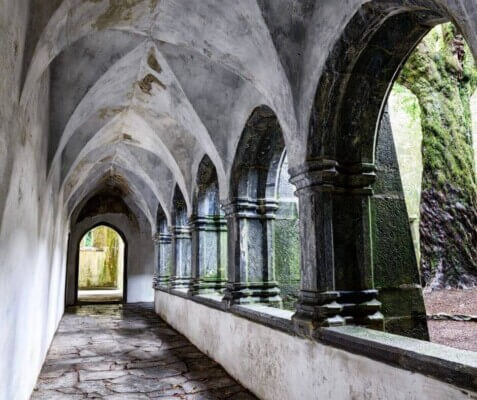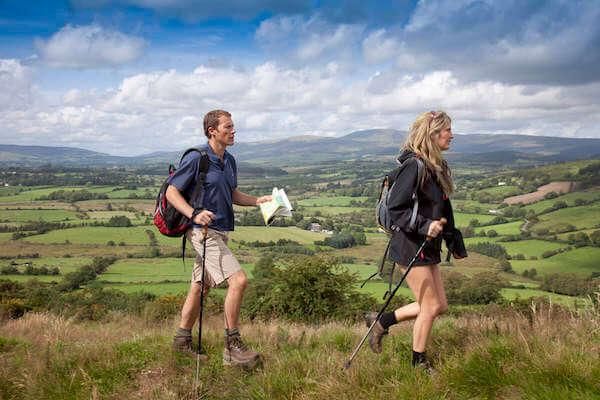Two of Ireland’s national parks, Killarney National Park and Wicklow National Park are highlighted in Travel & Leisure Magazine’s Top 11 Most Incredible National Parks Outside the United States.
 This news item and page contain affiliate links and I may earn compensation when you click on the links at no additional cost to you.
This news item and page contain affiliate links and I may earn compensation when you click on the links at no additional cost to you.
The list, compiled by the magazine’s advisors, was released earlier this month.
Both parks are part of the country's six national parks.
The other four include Glenveigh National Park in Co. Donegal, Connemara National Park in Co. Galway, Ballycroy National Park in Co. Mayo, and the Burren National Park in Co. Clare.
Other national parks from around the world mentioned in the Top 11 list include Plitvice Lakes National Park in Croatia; The Galapagos National Park on the Galapagos Islands; Kaz Daglari in Turkey; Mana Pools National Park in Zimbabwe; Rishiri Rebun Sarobetsu National Park in Japan; The Cairngorms National Park in Scotland; Altyn-Emel National Park in Kazakhstan; Bandhavgarh National Park in India; The Azores in Portugal, and Namib-Naukluft National Park of Namibia.

If you’re visiting Ireland any time soon, be sure to put these two counties — and these incredible parks — on your travel itinerary.
Killarney National Park
Killarney National Park has the distinction of being the first of Ireland’s national parks, established when the Muckross Estate was donated to the Irish Free State in 1932.
Since then, the park has been greatly expanded.

It now covers over 25,000 acres that include a diverse ecology, some of which contain rare animal species.

Together with native oak trees and yew woodlands, as well as the magnificent McGillycuddy’s Reeks – Ireland’s highest mountain – the park is the only one in Ireland that is home to a herd of red deer.
What to See at Killarney National Park
There is much to see in Killarney National Park. Here are some of its main attractions:
Muckross Abbey

Founded in 1448 by the Observantine Franciscans, it is said to be the burial place of several local chieftains, as well as notable Kerry poets from the 17th and 18th centuries.
Ross Castle

Located on the shores of Lough Leane, Ross Castle is another popular attraction in the park.
The 15th-century tower house was once the residence of Chieftain O’Donoghue Mór. The castle has been restored and is open to the public.
The Lakes of Killarney
Perhaps Killarney National Park’s most beautiful attribute is the three lakes that make up the Lakes of Killarney promoted in tourist brochures.

They include Lough Leane (also known as the Lower Lake), Muckross Lake (also known as the Middle Lake), and the Upper Lake.
The lakes are interlinked and together comprise close to a quarter of the park’s area.
They join at the Meeting of the Waters, a popular tourist spot.
The Muckross Estate
The Muckross Estate is also one of the park’s most popular attractions.

The estate, which attracts more than 250,000 visitors a year, includes the Muckross Traditional Farms, a working farm that recreates what rural Irish farm life was like in the 1930s before electricity.
Compare Car Rental Rates with Discover Cars
Wicklow National Park
Wicklow National Park is composed of 54,000 acres of protected land located in the Wicklow Mountains, not far from Dublin, Ireland’s capital.

It contains a variety of habitats, including blanket bog, deciduous and coniferous woods, areas of upland grassland, heath, and exposed rock areas, which has made it a favorite location for moviemakers.
Some of the park’s protected wildlife includes several species of bats, rare otters, and nine threatened bird species.

The main attraction in the park is the Glendalough Monastic Site, the 6th-century settlement founded by St. Kevin.
The site includes a near-perfect round tower, St. Kevin’s Kitchen (a church), St. Kevin’s Cell (a beehive hut where Kevin lived), St. Kevin’s Cross, and more.
A visitor center complete with interactive displays tells the story of St. Kevin’s journey to Glendalough.

Wicklow National Park contains several scenic drives.
They include the Military Road, which runs north-south across the mountains and includes attractions like the Liffey Head Bog (the source for Dublin’s River Liffey), the Sally Gap, the Glenmacnass Waterfall, and more.

On the R759 road, which runs east-west through the park, you’ll have commanding views of Lough Tay and the privately-owned Guinness Estate.

A viewing platform along the R756 road will give you a splendid view of the Wicklow Gap and further on, you’ll reach the Pollaphuca Reservoir, known locally as Blessington Lake.

Hillwalking in the Wicklow National Park is also very popular. Since the region is remote, it’s best to take a guided walk through this area
Read More: Killarney National Park Now a Sister Park to U.S. Park

